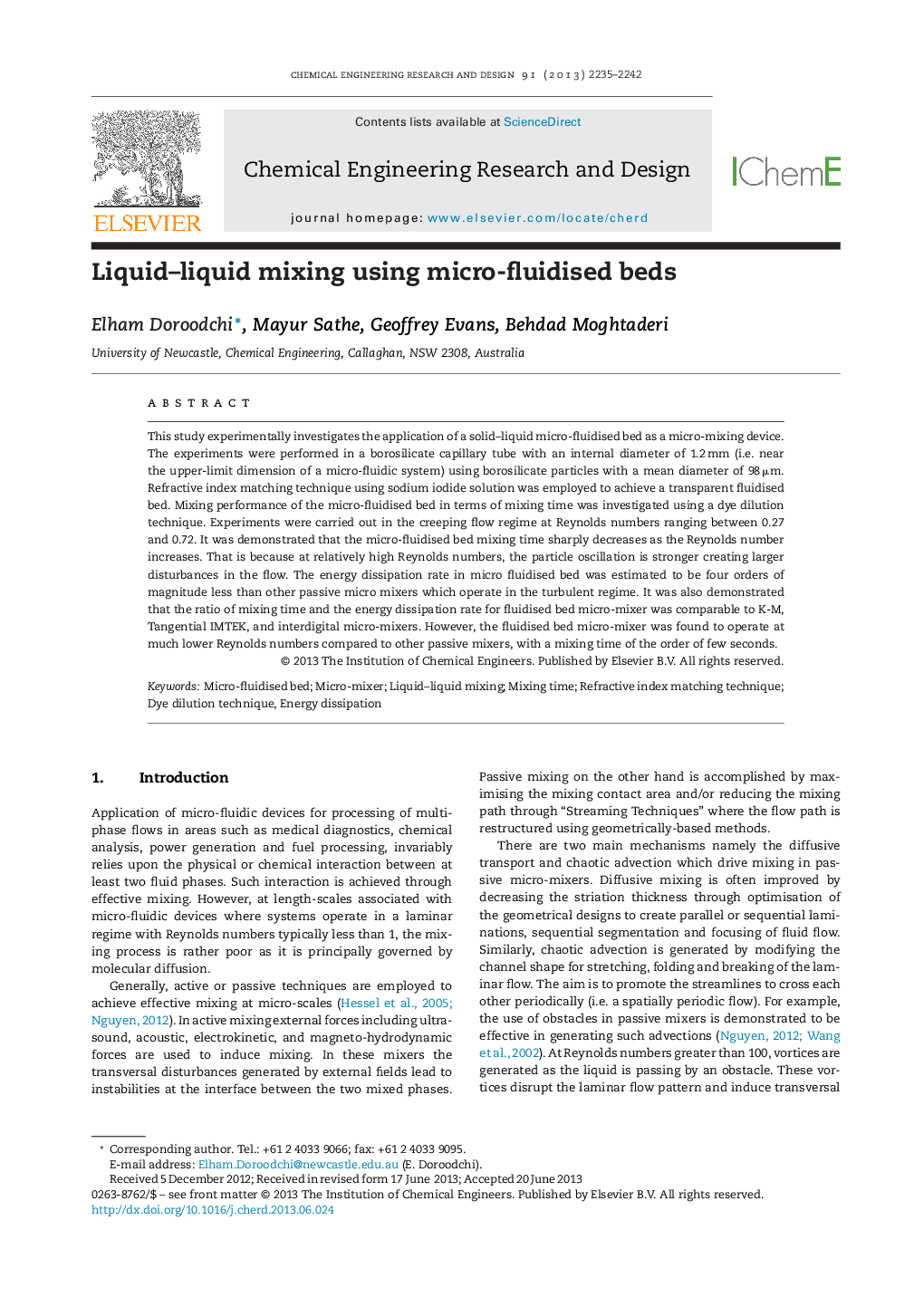| Article ID | Journal | Published Year | Pages | File Type |
|---|---|---|---|---|
| 10385120 | Chemical Engineering Research and Design | 2013 | 8 Pages |
Abstract
This study experimentally investigates the application of a solid-liquid micro-fluidised bed as a micro-mixing device. The experiments were performed in a borosilicate capillary tube with an internal diameter of 1.2 mm (i.e. near the upper-limit dimension of a micro-fluidic system) using borosilicate particles with a mean diameter of 98 μm. Refractive index matching technique using sodium iodide solution was employed to achieve a transparent fluidised bed. Mixing performance of the micro-fluidised bed in terms of mixing time was investigated using a dye dilution technique. Experiments were carried out in the creeping flow regime at Reynolds numbers ranging between 0.27 and 0.72. It was demonstrated that the micro-fluidised bed mixing time sharply decreases as the Reynolds number increases. That is because at relatively high Reynolds numbers, the particle oscillation is stronger creating larger disturbances in the flow. The energy dissipation rate in micro fluidised bed was estimated to be four orders of magnitude less than other passive micro mixers which operate in the turbulent regime. It was also demonstrated that the ratio of mixing time and the energy dissipation rate for fluidised bed micro-mixer was comparable to K-M, Tangential IMTEK, and interdigital micro-mixers. However, the fluidised bed micro-mixer was found to operate at much lower Reynolds numbers compared to other passive mixers, with a mixing time of the order of few seconds.
Keywords
Related Topics
Physical Sciences and Engineering
Chemical Engineering
Filtration and Separation
Authors
Elham Doroodchi, Mayur Sathe, Geoffrey Evans, Behdad Moghtaderi,
